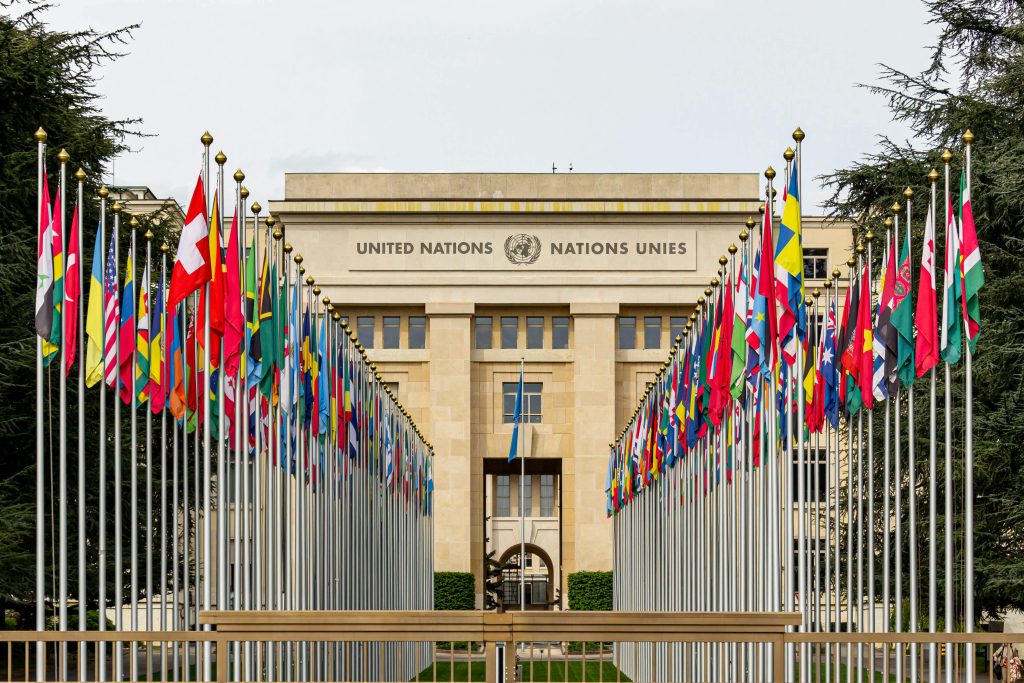As international relations grow more complex, nation-states are reassessing traditional methods of diplomacy and collaboration. One of the most significant shifts in recent years is the rise of minilateralism, widely recognized today as a modern approach to foreign policy. It reflects a practical, flexible, and targeted method of achieving foreign policy objectives without the heavy constraints of traditional multilateral institutions.
Unlike multilateralism, which involves large numbers of countries working through extensive diplomatic frameworks like the United Nations or World Trade Organization, minilateralism brings together a limited number of actors with shared goals. This more focused and strategic collaboration is helping states respond to global challenges with greater efficiency and clarity.
In this article, we’ll examine how minilateralism developed, what factors are driving its adoption, and why it is increasingly preferred as a modern approach to foreign policy.
Understanding Minilateralism in Global Relations
Minilateralism is a foreign policy strategy where a small group of countries—usually those with shared strategic interests—form partnerships to tackle specific issues. These issues can range from climate change and regional security to trade and technological cooperation.
As a modern approach to foreign policy, minilateralism shifts away from consensus-driven, large-scale diplomacy. Instead, it focuses on building partnerships that are more manageable, agile, and capable of delivering measurable outcomes. This trend is especially visible in new groupings such as:
- The Quad (United States, India, Japan, Australia) – focused on Indo-Pacific security
- AUKUS (Australia, United Kingdom, United States) – centered on defense and technology sharing
- ASEAN+3 – an expanded economic and political cooperation mechanism in East Asia
These examples demonstrate that minilateralism is more than just a temporary solution—it’s becoming a long-term strategy and a reliable modern approach to foreign policy in a multipolar world.
Why Has Minilateralism Emerged? Historical and Political Context
Minilateralism has gained traction in the 21st century due to several key developments that have reshaped global diplomacy:
1. Multilateral Fatigue
Traditional multilateral institutions are often criticized for being slow, bureaucratic, and ineffective. The requirement for consensus among dozens or even hundreds of nations often leads to watered-down agreements or prolonged deadlocks. Many nations have become disillusioned with these forums and instead seek faster, more targeted methods—hence the rise of minilateral diplomacy as a modern approach to foreign policy.
2. Changing Global Power Structures
The international system is no longer unipolar. With the rise of regional powers like China, India, and Brazil, global governance has become more decentralized. In this environment, small and strategic coalitions of countries are better suited to managing specific regional or thematic concerns, making minilateralism a viable alternative.
3. Increased Urgency on Global Issues
Global problems such as pandemics, cybersecurity threats, environmental disasters, and energy crises demand rapid and coordinated responses. Minilateral frameworks enable states to act quickly without the procedural delays of large institutions. This need for rapid action makes it an appealing modern approach to foreign policy.
4. Strategic and Ideological Alignment
Minilateralism allows countries to collaborate with like-minded partners who share similar values, such as democratic governance, free-market economies, or regional security goals. This alignment fosters trust and smoother diplomatic cooperation compared to multilateral bodies that include conflicting ideologies and national interests.
Major Factors Driving the Adoption of Minilateralism
Several tangible benefits are motivating countries to choose minilateralism over traditional diplomatic approaches. These include:
1. Efficiency and Speed
Small groups make it easier to negotiate, make decisions, and take action. In fast-changing geopolitical environments, this ability to act promptly is crucial.
2. Focused Objectives
Minilateral partnerships are often issue-specific. Whether it’s maritime security, technological development, or economic policy, such coalitions are able to concentrate resources and expertise on targeted outcomes.
3. Reduced Bureaucracy
Fewer members mean less bureaucracy, lower administrative costs, and more direct communication between decision-makers. This aligns with the principles of a modern approach to foreign policy that emphasizes streamlined processes.
4. Greater Accountability
Because the group is smaller, each country has a clearer understanding of roles and responsibilities. This improves transparency and the likelihood of successful implementation of agreements.
5. Policy Flexibility
Minilateralism provides flexibility in forming partnerships and adapting policy goals. Unlike rigid international treaties, these frameworks allow room for experimentation and innovation.
Minilateralism vs. Traditional Multilateralism
| Feature | Minilateralism | Multilateralism |
|---|---|---|
| Size of Group | Small, strategic | Large, inclusive |
| Speed of Action | Fast and focused | Slow and consensus-driven |
| Decision-Making | Simplified and direct | Complex and lengthy |
| Flexibility | High adaptability | Lower flexibility |
| Scope of Cooperation | Issue-specific | Broad and general |
| Accountability | Easier to track | Harder to enforce |
While multilateralism promotes inclusivity and global consensus, it often struggles to deliver timely or practical solutions. Minilateralism, in contrast, embodies the traits of a modern approach to foreign policy that prioritizes outcomes over process.
Real-World Examples of Minilateral Diplomacy
To better understand how this modern approach to foreign policy works in practice, consider the following examples:
The Quad (Quadrilateral Security Dialogue)
Formed by the U.S., Japan, India, and Australia, the Quad addresses regional security in the Indo-Pacific. It includes joint military exercises, tech partnerships, and coordinated responses to regional threats—without needing UN approval.
AUKUS Alliance
This trilateral defense pact between Australia, the U.K., and the U.S. focuses on sharing military technology, including nuclear-powered submarines and cybersecurity infrastructure. It bypasses larger, slower institutions while still achieving impactful results.
Pacific Alliance
This Latin American trade bloc (Chile, Colombia, Mexico, and Peru) is another example of a minilateral partnership fostering regional economic growth and open-market policies without global institutional involvement.
These examples illustrate how minilateralism is actively shaping diplomacy in multiple regions—confirming its role as a modern approach to foreign policy.
The Future of Minilateralism in Global Affairs
Looking ahead, minilateralism is expected to play an even more central role in foreign policy decision-making. As international challenges grow more complex and interdependent, states will continue seeking practical and reliable ways to protect their interests and contribute to global solutions.
However, it’s important to note that minilateralism should not replace multilateralism entirely. Instead, both approaches can coexist. While minilateralism serves as a modern approach to foreign policy offering speed and precision, multilateralism remains vital for addressing issues requiring broad international consensus, such as nuclear disarmament or climate treaties.
Conclusion
Minilateralism represents a strategic shift in how states interact on the global stage. As a modern approach to foreign policy, it aligns with today’s diplomatic needs—efficiency, relevance, and results. In a world increasingly shaped by regional dynamics, urgent crises, and power multipolarity, minilateralism offers a viable pathway for achieving meaningful international cooperation.
By embracing smaller, smarter, and more focused alliances, countries can navigate foreign policy with greater agility and confidence—while still contributing to global peace and stability.
Related Readings:
- What were the key driving forces behind the establishment of International Relations as an academic discipline? Provide an analysis of the major historical events and intellectual developments that contributed to its evolution and formal recognition in the world.
- What are the key theoretical perspectives of non-Western approaches to understand the nature and evolution of world politics, and how do they complement or challenge traditional Western paradigms?

